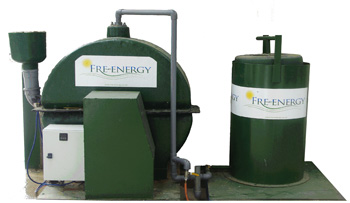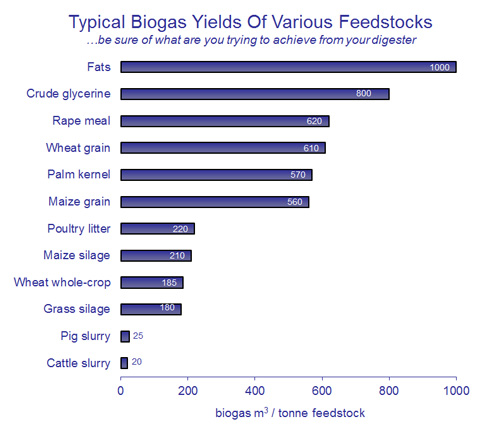Feedstock Selection
Feedstock Mixing

This is our mini digester, which we use to test various feedstocks for gas yield and digestion time
Co-digestion, i.e feeding the digester with a combination of feedstocks, increases the nutrient quality of the digestate and produces a higher biogas yield. Imported organic wastes, e.g. crops, spoiled silage, grass or food processing wastes, contain a significant amount of energy that is “locked up” within the chemical structure of the waste material. During the anaerobic digestion process, bacteria break down the structure releasing the energy in the form of biogas, and valuable nutrients in the form of digestate. Accepting that energy output is feedstock type dependent, tonne for tonne these wastes typically produce between four and ten times as much energy.
Importing wastes creates an additional revenue stream and also has a significant environmental benefit; as both the nutrients and the energy from these wastes can be fully utilised, instead of being wasted by composting or being sent to landfill sites. Farms utilising brought in wastes through AD processing will reduce, or potentially negate, the need to purchase expensive, unsustainable chemical fertilisers.
Suitable types of organics that can be used to feed an A.D. plant:
- Waste silage and hay
- Slurry from local dairy farms
- Field toppings
- Poultry litter
- Food waste production between farmer and shops, eg abattoir, waste grains and flour, milk wastes, waste potatoes
- Food waste (Industrial) from food producers, eg bakery pies, cooked meats, etc
- Food waste (non-domestic) from hotels, etc
- Food waste from shops
- Food production sludges from settlement tanks, eg grease traps
- Food waste (domestic) – veg peelings, discarded portions of vegetables and meat, cooked or uncooked
- Sewage (settled sewage sludge)
- Septic tank emptying
- Lawn mowings
- Garden green wastes
- Amenity areas
